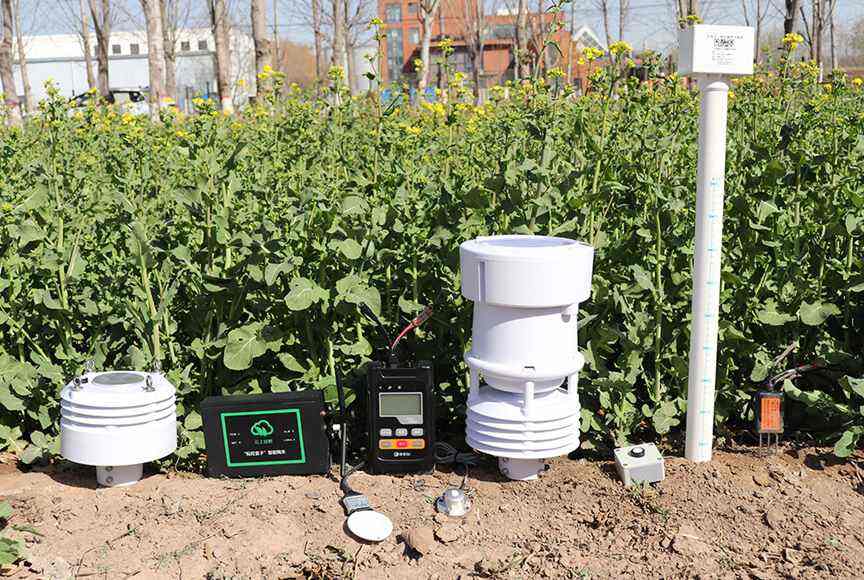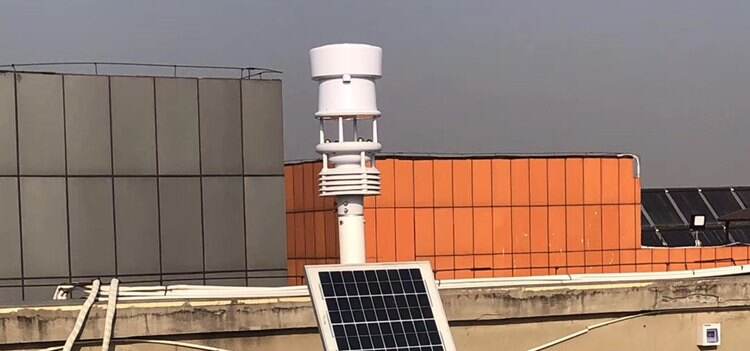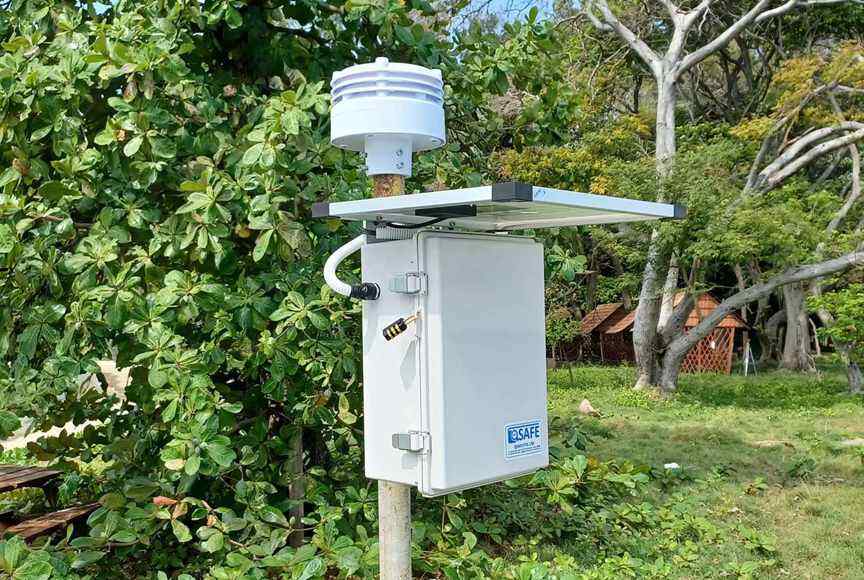With the growing demand for IoT technology and intelligent monitoring, environmental sensors have become essential equipment in meteorology, agriculture, transportation, photovoltaic hydrology, and water conservancy. However, with the wide variety of environmental sensors on the market and complex parameters, many users face the challenge of choosing an environmental sensor that truly suits their application scenario.
This article will focus on these four key industries and provide a detailed analysis of the technical specifications and functional features you should consider when purchasing environmental sensors, helping you make informed and accurate purchasing decisions.
Key Points for Selecting Environmental Sensors in the Meteorological Field
Meteorological monitoring requires extremely high data accuracy and stability. When selecting environmental sensors, consider the following:
Multi-parameter Integration Capability
Key meteorological parameters such as temperature, humidity, air pressure, wind speed and direction, and rainfall should be measured in an integrated manner to reduce equipment deployment complexity.
Multi-parameter integration of environmental sensors not only saves on-site installation space, but also simplifies the data collection process and facilitates centralized management. For example, in a weather station, unified environmental sensors can reduce maintenance workload and points of failure, improving the stability and efficiency of the overall monitoring system. Measurement Accuracy and Response Speed
Guaranteed temperature error within ±0.1°C, wind speed accuracy within ±0.3m/s or better, and high rainfall sensitivity ensure reliable data.
High-precision environmental sensors provide more detailed and scientific environmental data, which is particularly critical for weather forecasting and disaster warning. Rapid response means timely detection of unusual climate changes, enabling relevant departments to proactively respond and mitigate losses.
Weather Resistance and Stability
High protection rating (IP65 or above) withstands complex environments such as rain, snow, wind, sand, and extreme high and low temperatures, ensuring long-term continuous monitoring.
In harsh outdoor environments, the durability of environmental sensor equipment directly impacts monitoring continuity. High-quality environmental sensors feature waterproof and dustproof housings, and their internal electronic components are specially treated to resist UV rays and corrosion, ensuring uninterrupted data collection.
Communication Protocol Compatibility
Support for multiple communication methods, including RS485, 4G, NB-IoT, and LoRa, ensures stable remote transmission of environmental sensor data.
Network conditions vary across different application environments, and flexible communication protocol support ensures real-time data transmission, whether in remote mountainous areas or urban areas. Multi-protocol support also facilitates integration with existing management systems, enhancing overall monitoring capabilities.

Key Considerations for Agricultural Environmental Sensor Selection
Precision agriculture relies on environmental sensors to scientifically guide production. When selecting a sensor, consider the following indicators:
Simultaneous measurement of multiple soil and meteorological parameters
Including soil moisture, soil temperature, air temperature and humidity, and light intensity, enabling comprehensive environmental monitoring.
Simultaneous monitoring of multiple parameters provides farmers with comprehensive information about the crop growing environment, helping to optimize irrigation and fertilization plans and improve crop yield and quality. Selecting an environmental sensor with this capability is particularly important.
Sensor Sensitivity and Stability
High monitoring accuracy and minimal drift support long-term outdoor use, preventing misjudgments that could lead to poor agricultural decisions.
Excellent stability ensures long-term accurate operation of environmental sensors, reducing economic losses due to sensor errors.
Low power consumption and wireless communication
facilitate remote deployment over large farmland areas, extend battery life, and reduce maintenance.
Wireless transmission technologies such as LoRa and NB-IoT support long-distance data transmission, reducing network deployment complexity and operational costs, making them suitable for the environmental sensor needs of modern agriculture.
Modularity and Scalability
Sensor units can be flexibly added to meet the needs of different crops and regions, enabling personalized configuration.
The modular design of environmental sensors facilitates subsequent upgrades and maintenance, meeting diverse agricultural application requirements.

Key Requirements for Selecting Traffic Environmental Sensors
Traffic environments are complex and require high safety. When selecting environmental sensors, consider the following:
Wind Speed, Wind Direction, and Precipitation Accuracy
Providing fast and accurate wind speed, wind direction, and precipitation monitoring helps traffic management respond quickly to severe weather conditions. Accurate data supports road safety decisions and reduces accidents. Reliable environmental sensors are the foundation of intelligent urban traffic monitoring.
Vibration- and Shock-Resistant Design
Able to withstand vibration and shock in traffic environments, ensuring stable operation. The device's robust structure and excellent seismic resistance make it suitable for installation in complex environments such as bridges and highways, where environmental sensor requirements are particularly stringent.
Real-Time Alerts
When environmental parameters are abnormal, multiple alerts, including SMS and app push notifications, are supported, improving emergency response efficiency. Promptly alerting relevant departments to address emergencies and ensuring smooth and safe traffic flow are key features of intelligent environmental sensor applications.
Compatible with traffic management systems
Supports multiple protocol interfaces for easy integration with traffic control center systems. This seamlessly integrates environmental sensor monitoring with traffic control, improving management efficiency.

Photovoltaic and Hydrological Environmental Sensor Selection Guide
Photovoltaic and hydrological monitoring applications place special demands on the stability and accuracy of environmental sensors:
Precise monitoring of light intensity and temperature and humidity
Monitoring solar radiation, ambient temperature and humidity assists with photovoltaic system regulation and power generation optimization. Accurate environmental sensor data helps improve power plant operating efficiency and equipment lifespan.
Rainfall and hydrological parameter collection
Accurate rainfall detection supports flood warnings and water resource scheduling with hydrological and hydrological systems. Highly sensitive environmental sensors support scientific water resource management and disaster prevention and mitigation.
High weather resistance
Adapts to the harsh outdoor environments of photovoltaic power plants and hydrological stations, ensuring long-term stable operation. Environmental sensor equipment must be UV-resistant, corrosion-resistant, waterproof, and dustproof to withstand extreme climate challenges.
Remote data transmission and storage capabilities
Supports cloud-based data management for historical data analysis and trend prediction. Remote monitoring reduces maintenance costs and improves management efficiency, making it a key feature of modern environmental sensor products.

General Recommendations for Purchasing Environmental Sensors
Regardless of industry, several key aspects should be considered when purchasing environmental sensors:
Manufacturer Qualifications and Technical Support
Select an environmental sensor manufacturer with experience and technical expertise to ensure equipment quality and after-sales service.
Equipment Calibration and Standard Compliance
Prefer environmental sensors certified to relevant national or industry standards to ensure data integrity.
Ease of Installation and Maintenance
Environmental sensors should be easy to install and support remote calibration and troubleshooting to reduce operational costs.
Budget and Cost-Effectiveness

Rationally configure environmental sensors based on actual needs, avoiding the waste of resources associated with blindly pursuing high-spec configurations.
Environmental sensors are a key foundation for smart meteorology, precision agriculture, safe transportation, and efficient photovoltaic and hydrological management. Scientific selection based on application scenarios, focusing on multi-parameter integration, high-precision measurement, weather resistance, and communication stability, are key elements to ensure effective monitoring and system operation. We hope this purchasing guide will help you clarify your needs and find the most suitable environmental sensor product, contributing to the digital transformation and sustainable development of the industry.
Table of Contents
- Key Points for Selecting Environmental Sensors in the Meteorological Field
- Key Considerations for Agricultural Environmental Sensor Selection
- Key Requirements for Selecting Traffic Environmental Sensors
- Photovoltaic and Hydrological Environmental Sensor Selection Guide
- General Recommendations for Purchasing Environmental Sensors

 EN
EN
 AR
AR
 BG
BG
 HR
HR
 FR
FR
 JA
JA
 KO
KO
 PT
PT
 RU
RU
 ES
ES
 ID
ID
 VI
VI
 TH
TH




